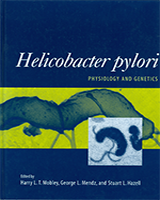From: Chapter 4, Basic Bacteriology and Culture

Helicobacter pylori: Physiology and Genetics.
Mobley HLT, Mendz GL, Hazell SL, editors.
Washington (DC): ASM Press; 2001.
Copyright © 2001, ASM Press.
NCBI Bookshelf. A service of the National Library of Medicine, National Institutes of Health.